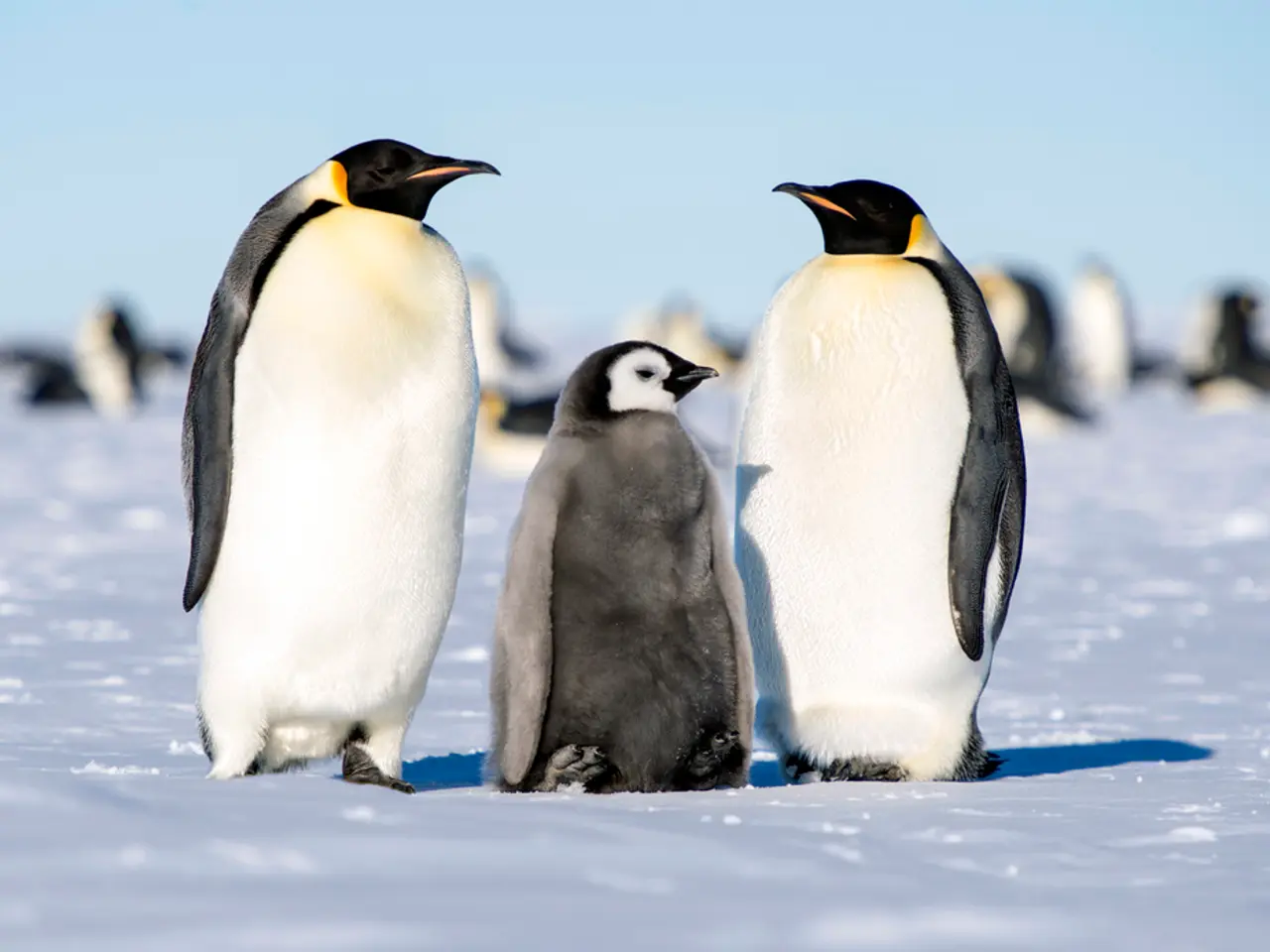Expanding ice mass in the Atlantic Ocean south of Greenland, a silent threat beneath the waves, sparks concerns among scientists.
A team of researchers from the University of California, Riverside (UCR) has made a significant breakthrough in understanding the causes of a long-standing enigma in the Arctic: the cold spot south of Greenland. Their findings challenge existing climate models and offer new insights into the complex interactions between oceanic and atmospheric systems.
Dr. Kai-Yuan Li, a doctoral student at UCR, explained that the correlation between the weakened Atlantic Meridional Overturning Circulation (AMOC) and the cooling in the region is "very robust." The AMOC, a system that transports warm, salty water from the tropics toward northern latitudes, has been shown to be slowing down, with potential implications for marine habitats and weather patterns across the Atlantic.
The UCR team's research, published in the journal Nature, reconstructed the history of the AMOC using temperature and salinity records spanning the last century. They compared their data with 100 different climate models and found that only those simulating a weakened AMOC matched the observed trends in the region.
The cold spot, if it persists and expands, could indicate broader disruptions in the global ocean system. The origins of the slowing AMOC and the resulting cold spot are a topic of scientific debate, but the UCR team's findings suggest that oceanic processes and a slowdown of the AMOC are central to the persistent cooling south of Greenland, rather than aerosol-based prediction models.
The cold spot may play a role in changing rainfall patterns and influencing the jet stream, with possible impacts reaching as far as Europe. Shifts in ocean salinity and temperature, resulting from a weakening AMOC, have the potential to alter habitats for species in polar regions and beyond.
Dr. Wei Liu, the climate scientist leading the UCR team, stated that their results show that only the models with a weakening AMOC get it right. The study suggests that the AMOC has been weakening for over a century and may continue if greenhouse gas emissions rise.
The UCR team aims to help societies prepare for emerging environmental challenges linked to shifting ocean currents by refining historical reconstructions and model comparisons. Their research offers new clues that may finally shed light on the underlying forces behind the "mysterious cold spot" south of Greenland.
The findings challenge models that rely heavily on declining aerosol emissions, arguing these are less accurate for this region. The research also highlights the complex interactions between ocean and atmospheric systems, emphasizing the need for more detailed representations of these processes in future climate models.
In conclusion, the cold spot south of Greenland is likely caused by changes in the Atlantic Meridional Overturning Circulation (AMOC). Understanding the dynamics behind the cold spot is crucial for anticipating future changes in the global ocean system as the climate warms. The UCR team's research provides valuable insights into this complex issue, paving the way for more accurate climate predictions and better-informed decision-making regarding environmental policies.
- Understanding the causes of the cold spot south of Greenland has significant implications for health-and-wellness, as shifts in ocean salinity and temperature could alter habitats for species in polar regions and beyond, potentially impacting human health and well-being.
- As the UCR team's research focuses on refining historical reconstructions and model comparisons to help societies prepare for environmental challenges, it also offers insights into the intersection of science fields, such as climate change, environmental science, fitness-and-exercise (through the potential impact on weather patterns), and health-and-wellness (through the preservation of marine ecosystems crucial to human health).




